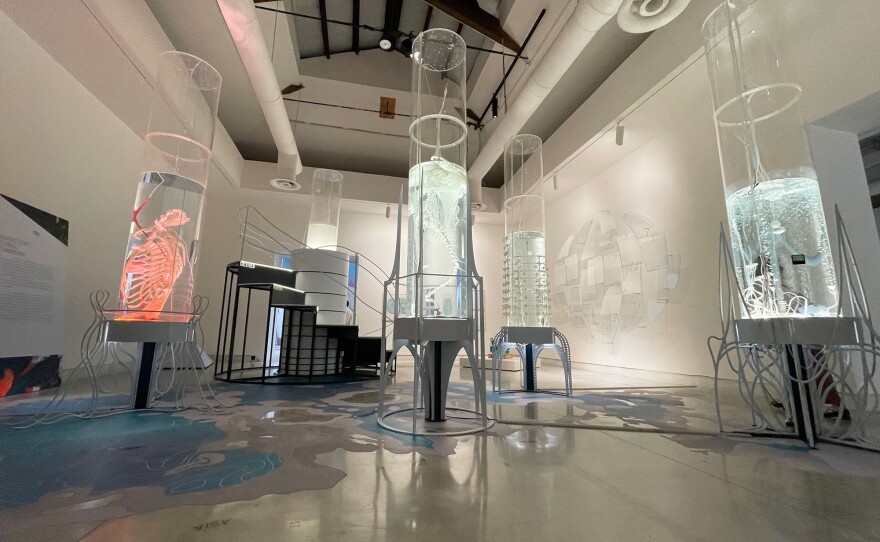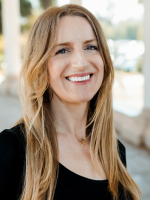The Venice Architecture Biennale is a prestigious architecture exhibition held every other year — part of the 126-year-old La Biennale di Venezia — and is curated by architect Hashim Sarkis, dean of MIT's School of Architecture and Planning.
Two San Diegans will be among the elite group of 112 participants showing their work in Venice as part of the 17th annual exhibition: Dr. Pinar Yoldas of UC San Diego and Dr. Daniel López-Pérez of University of San Diego.
'Geoscope 2'
López-Pérez's project is a collaboration with Jesse Reiser, called "Geoscope 2." Informed by the planetary and architectural work of R. Buckminster Fuller (1895-1983) and his original Princeton Geoscope, the piece is an immersive, split-sphere sculptural and video work.
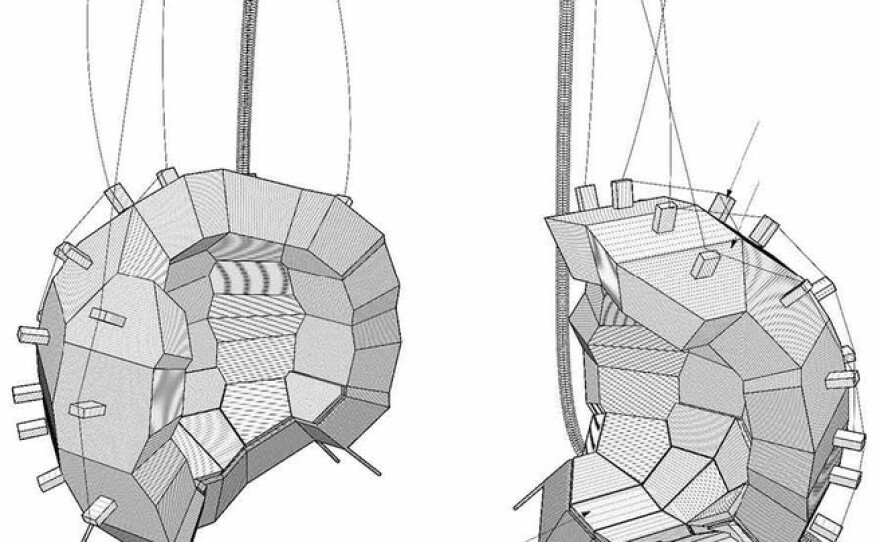
From afar, "Geoscope 2" looks like a geodesic dome made of multiple inflatable panels or screens — but it's cracked open, so a viewer can walk between the two halves of the sphere.
Inside, each pillow-like screen holds a projected video clip. The clips are from videos by approximately 25 designers — ranging from notable architect Kazuyo Sejima to ecologist Timothy Morton. As visitors walk through, the clips play in unison.
"So when they are in the space, it is an overwhelming, sensorial cacophony," López-Pérez said. But, he added, viewers will be able to follow each clip, and there'll also be QR codes to scan for each contribution to view it in full.
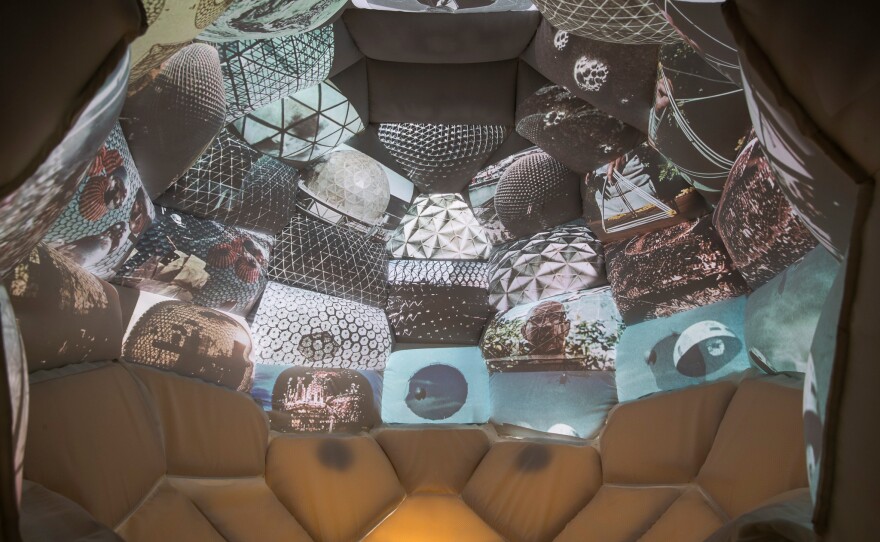
"Every clip is about a minute, a minute and a half, so they do pose questions and they do pose solutions and they range from everything from climate, housing, all these social issues, so you can get something from the snippets, and you can also just QR-code your way to the original playlist," López-Pérez said.
The theme of the full exhibition this year is "How will we live together?" and López-Pérez tackled this across expanding realms: the individual, the home, the city, the nation, the continent, and the globe.
López-Pérez, who came to USD to help launch the undergraduate architecture program in 2009, studied the work of Fuller with his undergraduate students. The project not only re-envisions Fuller's work through contemporary study, but it suggests the idea of multiple, disunified worlds as an equitable solution, rather than a singular worldview.
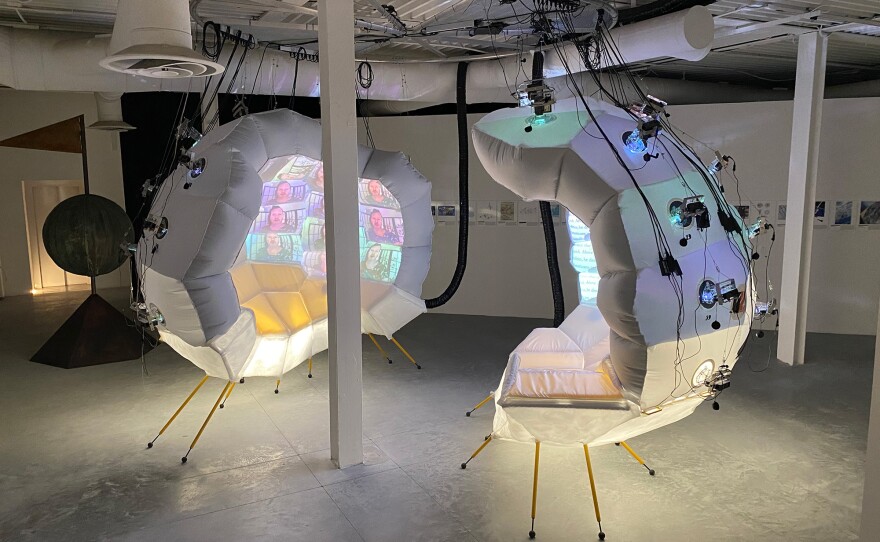
By using a contemporary response and discourse for Fuller's geoscopes, it's a way of bringing the past forward — namely the "will" in the "how will we live together" question. And while this piece is steeped in the history of Fuller, López-Pérez said that history can serve as a sort of projection — not a roadmap, but it does offer the questions.
"Nothing starts from scratch. Knowledge begins by building knowledge from previous knowledge,' López-Pérez said.
'Hollow Ocean 2048'
For the "How will we live together?" theme, UC San Diego researcher, designer, artist and professor Pinar Yoldas said she thought more broadly than a human "we." Yoldas applied it to the marine ecosystem she saw in jeopardy of near-total collapse.
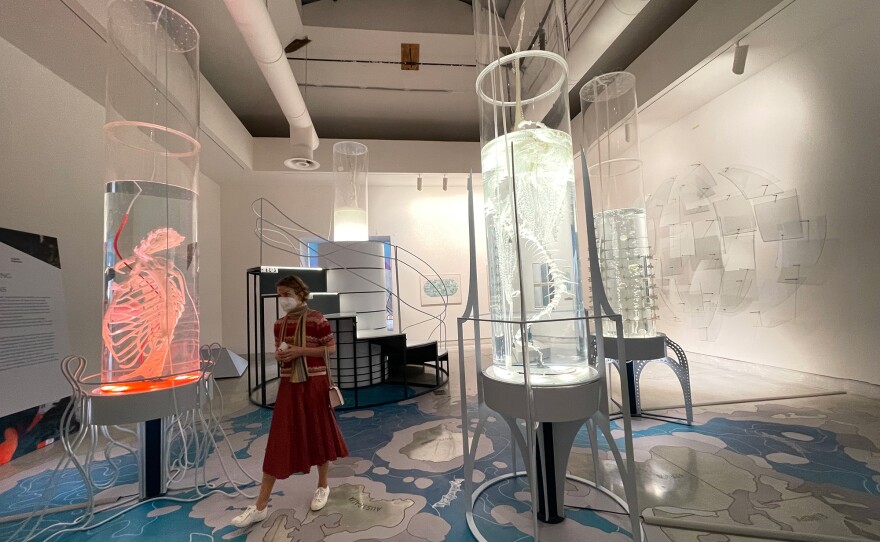
"Hollow Ocean 2048" is a series of six aquatic columns, with each representing a different threat to the ocean, like oil extraction, overfishing, synthetic polymers and plastic pollution, excessive CO2 and changing ocean temperatures.
The columns are large, sculptural pieces, containing fluid and light components as well as tangible representations of a dying ocean. These include a backbone made of the bones of about a dozen other marine mammals, floating dots of plastic, a massive fishing net, a device that releases a drop of oil every ten minutes. Nothing is purely fictional in Yoldas' work.

"Think of it as chunks of information and concern sprinkled or just spread across these different columns," Yoldas said. "In a way it's kind of a documentary installation, it's a document, but at the same time it looks forward into the future."
"Hollow Ocean" also taps into the transformative impact of an interactive, immersive exhibition — like the kind found in hands-on children's museums. Those types of works are powered by children's innate curiosity, Yoldas said.
"I guess my assumption is that we all have that curiosity in us. Sometimes it just needs to be triggered," Yoldas said. "I believe architectural space can trigger that. Some of my most memorable experiences are when I change my location and have an experience that's just architecturally very different."
For example, Yoldas remembers her first time experiencing the Redwood forests, or the first time she entered the Hagia Sophia, once the largest cathedral structure.

"You immediately get goosebumps. So I think using scale, light, temperature, color, architecture does have an effective way of speaking to us," she said. "For me it's really important to design for promoting curiosity and also to design for increasing empathy. I believe space and design of spaces carefully can increase how we feel about non-human life, how we perceive it."
Yoldas' work challenges the idea that architecture is a primarily human platform, and that the future of architecture cultivates connections between all living things.
"I believe this is what we're going to be looking at in the next couple of decades — the architecture of removing the human from the natural world, architecture of dissolving," Yoldas said. "I think that's perhaps the most significant feature of this Biennale for me, that there's an emphasis on the next phase of architecture."
The installation is profoundly informative, but the aesthetics are also worth mentioning. Light moving through and from the massive columns of liquid casts an ethereal beauty to the entire space, and the intricate details within each column invite a closer look.

"I'm an idealist and I believe that art has a transformative power, and we kind of forget how crucial it is for us to get educated via art. I think art trains our emotions and art trains us in ways that are maybe not directly visible to us," said Yoldas.
Pinar Yoldas' "Hollow Ocean" and Daniel López-Pérez's "Geoscope 2" will be on view in the Venice Architecture Biennale in Italy from May 22 through November 21, 2021. The works will be juried on May 20.
While the works are in-person only on-site installations, Venice Biennale has put together a digital "behind the scenes" sneak peek digital platform here.

